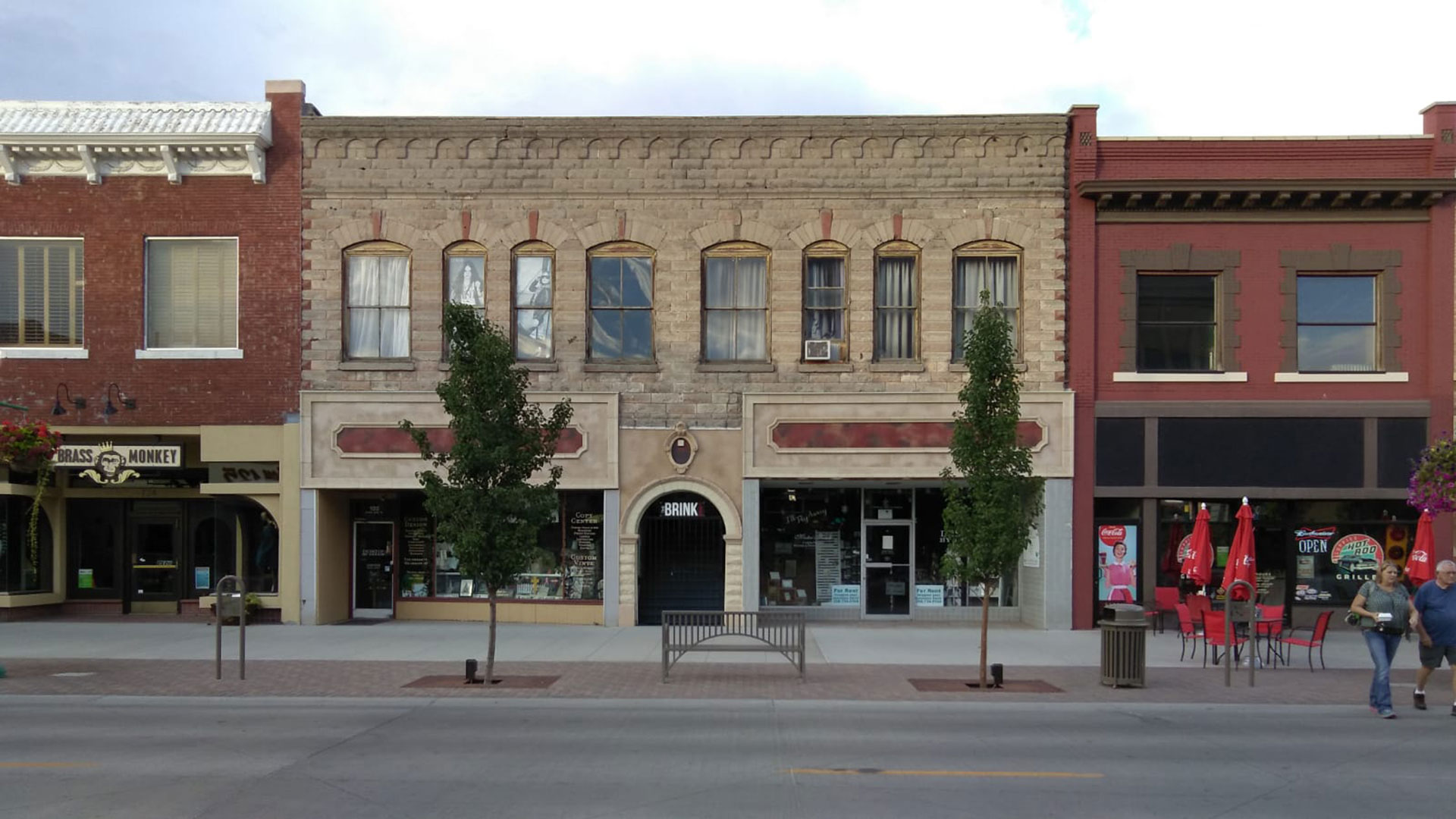April 12, 2024
Regional transportation systems must meet the needs of many people and communities. As urban areas grow, it’s critical that transportation planning becomes a collaborative process between anchor cities and their surrounding communities so that transportation and land use decisions are made to best serve the region.
Following the 2020 Census, the urban area of Twin Falls, Idaho and Kimberly, Idaho surpassed the 50,000-population threshold established by the Federal Highway Administration (FHWA), which qualified the urban area to form a metropolitan planning organization (MPO).
“Idaho is one of the fastest-growing states in the country, and it’s no surprise that we have seen increasing transportation needs in Twin Falls and the surrounding area,” Twin Falls Mayor Ruth Pierce said. “Forming the Magic Valley MPO allows our local jurisdictions to make funding decisions together, at the regional level.”
An MPO is a policymaking and funds-managing regional agency composed of representatives from local jurisdictions with transportation and land use management responsibilities, including cities, counties, highway districts, and state departments. The primary purpose of an MPO is to provide a regional forum for transportation and land use planning.
Currently, there are more than 400 established MPOs across the United States, including five in Idaho. Yet, when new MPOs must be formed following each decennial Census, there is no guidebook to help urban areas navigate the process. Over the last three years, a Kittelson team partnering with RBCI, a local public involvement firm, supported the Idaho Transportation Department (ITD) and local agencies in the Magic Valley to form the Magic Valley MPO (MVMPO)—a process that included reading between the lines, fostering an environment of collaboration, and picking up the phone to connect with others. Here’s what we learned along the way.

Shoshone Falls near Twin Falls, Idaho. Photo: Frank Schulenburg, Wikimedia Commons.
Conduct Research
There is no manual, guidebook, or checklist to help a region form an MPO, so we had to lean heavily on our research and investigation skills to look through federal code, federal guidance, state law, and other related documents to parse out the requirements. Throughout the research process, we found it particularly helpful to connect with the FHWA and other established MPOs. As one of the primary sources of funding for MPOs, the FHWA served as a valuable guide to start the MVMPO off strong.
After the initial round of research, we realized there is a lot of flexibility in how MPOs are formed, structured, and operate, including:
- Boundary of MPO and Number of Member Agencies: The minimum required boundary of the Metropolitan Planning Area must include the agencies that have transportation and land use decision-making responsibilities for the Census-designated Urban Area. However, there is no limit on the maximum area of the boundary or the number of agencies that can be involved. This flexibility allows for the local agencies near the anchor city to determine how to best be a part of the regional transportation system and include any area economically connected to the region or that might become part of the Urban Area in the next 20 years.
- Structure: The MPO can start as an independent agency, which requires its own office space, business systems, technology, policies, human resources, and other crucial operations elements. Or, it can be “hosted” by the anchor city of the Urban Area, to have some of those key concerns and elements provided by or decided by the existing government structures in place of the hosting agency. Additionally, an MPO can begin as a hosted agency and transition to independence when the time is right. As an area grows, it is also an option for other forms of regional government to absorb an MPO to provide additional services, as described in the next bullet.
- Number of Employees and Services Provided: Creating the four federally required work products that the MPO must provide and complete for the Metropolitan Planning Area, as well as addition facilitating meetings of the MPO’s Policy Board and Technical Advisory Committee, can be a full-time job for an individual staff member. However, if there are additional services that the MPO could or would like to provide, such as operating a transit service, overseeing a regional travel demand model, providing technical assistance to local agencies, assisting with land development review processes, etc. then additional staff can be added. Typically, these additional services and the staff who provide them are part of a more comprehensive form of regional government, such as a Council of Governments or a Regional Planning Agency.
Connect with Existing MPOs
Research needs to go beyond federal legislation and code. One of the most important sources of information throughout the process was connecting with established MPOs and learning from their experience.
We strategically connected with MPOs based on geographic size and similar regional needs, such as MPOs that serve a region with a high agricultural and recreational industry that also has an anchoring city. In interviews with Executive Directors and other members of the MPOs’ technical staff, we collected information and anecdotal evidence to develop a better understanding of the different structures, activities, staffing needs, governing philosophies, and community impact that different MPOs have.
Here were some of our key takeaways from these conversations:
- Limited staff turnover was key to developing institutional knowledge and maintaining community relationships.
- Determining a region’s specific needs allows MPOs to prioritize and tailor their efforts to best benefit member agencies.
- Creating a regional forum allows member and non-member agencies to discuss regional transportation.
To learn more from this outreach, you can listen to a panel discussion of MPO Executive Directors here.
Encourage Broad Participation
An MPO is a federally mandated requirement for urbanized areas with populations over 50,000 to receive federal formula funding. However, a regional agency can often be viewed as an additional layer of bureaucracy prior to proving its value for pooling resources, increasing collaboration, and providing additional funding opportunities.
To mitigate the perception of local agencies “being told what to do,” the leading agency in this effort, ITD District 4, was proactive in inviting potential MPO member agencies to the table to learn about the benefits of an MPO up front.
We facilitated four informational meetings between June 2021 and November 2021 to provide technical information, discuss the benefits of MPOs, and answer questions about how an MPO will affect various existing processes and entities in the Magic Valley. In total, representatives from 22 cities, counties, highway districts, state departments, and other organizations (including transit service providers and medical systems) were encouraged to participate. By March of 2022, nine agencies had elected to move forward in forming the MPO.

Twin Falls, Idaho Downtown Historic District. Photo: Yusuf Khan, Wikimedia Commons.
Forming the Magic Valley MPO
Ultimately, we developed a three-phase approach in the Magic Valley region, beginning in June 2021. This approach has included the following elements:
- Phase 1: MPO Research, Education, and Engagement (June 2021 – March 2022)
- Phase 2: MPO Participation, Governing Documents, and Supporting Structures (April 2022 – December 2023)
- Phase 3: MPO Operations, Staffing, and Work Products (January 2024 – Present)
Currently, we are assisting the MVMPO with daily operations while the hiring process of the Executive Director occurs. Following the onboarding of the MVMPO’s Executive Director, we will work with the MVMPO to develop the federally required Metropolitan Transportation Plan and the Transportation Improvement Program. These documents are expected to be completed in 2025.
Phase 1: MPO Research, Education, and Engagement
The first phase of the approach involved significant research into MPO requirements and the existing planning structure of the Magic Valley. Additionally, we conducted a series of interviews with MPO directors and technical staff to learn best practices and their lessons. These key findings were summarized and presented to the local and regional agencies to present a comprehensive overview of what an MPO is, how it functions, what its purpose is, and how the MPO will serve the Magic Valley. To facilitate the education of Magic Valley stakeholders, we also organized a panel discussion with select MPO directors.
At the close of this phase, the agencies and organizations that had participated thus far in the MPO planning had the choice of whether to continue forward to develop the MPO, which nine chose to do.
Phase 2: MPO Participation, Governing Documents, and Supporting Structures
The second phase involved engaging with the anticipated MPO member agencies in the development of the MPO Joint Powers Agreement, which allows each member agency to cooperatively provide services or exercise shared powers outside of its own normal jurisdiction, and the MPO Bylaws, which governs how the Policy Board (decision-making body) conducts its business.
To guide the development of these critical documents, the Acting Policy Board was formed from the agencies that expressed interest in participating at the close of Phase 1. The Acting Policy Board was the temporary decision-making body for the MVMPO prior to official designation and formation. We worked closely with the Acting Policy Board to develop the policies and procedures for the MPO, including:
- Specific roles and responsibilities of the future MVMPO and supporting committees
- Vision, goals, and objectives
- A process for document adoption
This information was compiled into the bylaws and Joint Powers Agreement. With these documents completed and coordination with ITD, the Idaho Governor officially designated the MVMPO as the metropolitan planning organization for the Twin Falls Urban Area in December 2023.
Phase 3: MPO Operations, Staffing, and Work Products
In the third and final phase of this process, the member agencies transitioned from the MPO Acting Policy Board into the MVMPO Policy Board. Member agencies of the MVMPO include the City of Kimberly, City of Twin Falls, District 4 of the Idaho Transportation Department, Hillsdale Highway District, Jerome County, Jerome Highway District, Twin Falls County, and Twin Falls Highway District.
During this phase, we worked with the MPO Policy Board to develop a brand, logo, and website, in addition to beginning the four federally required work products:
- Public Participation Plan
- Unified Planning Work Program
- Metropolitan Transportation Plan
- Transportation Improvement Program
A key milestone in the phase, and in the formation of the MVMPO overall, will be the hiring of the Executive Director. This person will oversee the organization’s operation and be responsible for executing the policies and direction established by the MVMPO Policy Board.
The Magic Valley region has grown to become the hub for services in south-central Idaho and northern Nevada. Yet, the surrounding natural beauty and collection of small communities make the needs of the region unique. With an MPO, the regional transportation system will continue to improve and better serve residents and visitors alike.
